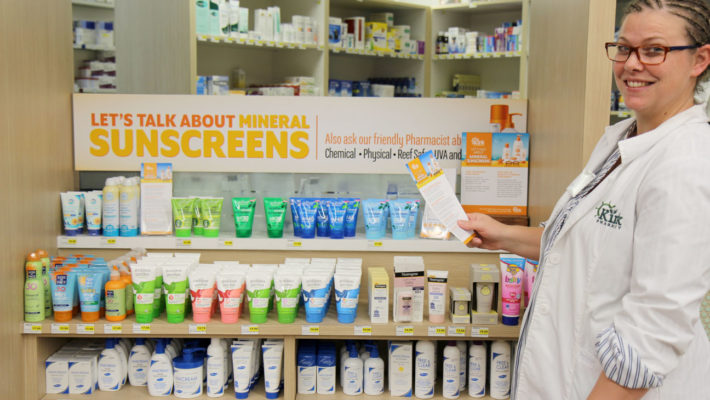
Let’s Talk About Sunscreens!
What is the difference between a chemical sunscreen and a physical sunscreen?
Chemical sunscreens work by absorbing UV rays. They must be absorbed into the top layer of the skin in order to work.
Physical sunscreens work by deflecting UV rays, similar to a mirror. They sit on top of the skin and don’t need to be absorbed.
What is the difference between UVA and UVB rays?
Both UVA and UVB penetrate the atmosphere and play a critical role in conditions such as premature skin aging, eye damage (including cataracts), and skin cancers. They also suppress the immune system.
UVA rays penetrate deep into the skin layers and cause wrinkling, loss of elasticity and pigmentation.
UVB rays mostly affect the outer layer of the skin and cause sunburn and tanning.
What are Mineral Sunscreens?
Minerals are a type of physical sunscreens. The active ingredients are zinc oxide and titanium dioxide.
Zinc oxide will deflect UVA and UVB rays, but titanium dioxide will only deflect UVB rays.
What are the benefits of Mineral Sunscreens?
Since they don’t get absorbed, mineral sunscreens do not need to be processed by the liver and are suitable for babies and people with sensitive skin. Mineral sunscreens are also more likely to be reef safe.
What does reef safe mean?
Sunscreens wash off of your body while swimming or diving and they enter the marine environment. Some ingredients can kill coral and damage the reefs, such as Oxybenzone, Octinoxate, 4-Methylbenzylidine camphor (UV filters) and Butylparaben (Preservative).
Reef safe sunscreens are:
- Biodegradable… they break down naturally in the environment and
- Eco-friendly… they minimize damage to the environment.
Most sunscreens brands will state right on the label if they are reef safe, but check with the pharmacist if you are not sure.
Why should sunscreens be applied in advance?
Both kinds of sunscreen work immediately after application, but maximum protection occurs after 15 to 30 minutes.
When you apply the sunscreen on your skin, some of it will evaporate or absorb to leave a thin UV-protective layer on top of your skin in a process called de-emulsification.
Like a wall that gets painted and has to dry before you can see an even color, sunscreen has to dry to give you full protection.
And don’t forget…

Stop in today at Kirk Pharmacy to view our new sunscreen display and speak with our Pharmacists about the best choice for you!

